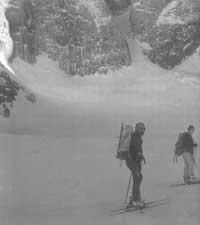How to adapt to altitude?
Elhuyar. In issue 20 of the magazine Zientzia eta Teknika we talk about the health problems posed by altitude. Canadian researchers have just found the reason for the so-called “lactate paradox” related to adaptation to altitude. This paradox was found in Chile 50 years ago and then doctors have been wrong.
When people adapted to high altitudes perform exercise, it was observed that it accumulates little amount of lactate in the muscles. However, those who live at low altitude accumulate a lot of lactate during muscular physical exercise.
Lactate is a side product of anaerobic breathing that occurs in the muscles that lack oxygen.

The team of researchers has found the answer in the muscles of the complementary ditches of the Indians who live in the Peruvian plateaus. The paradox of lactate is related to altitude. In molded or acclimatized people, the higher the altitude, the less lactate there is. According to extrapolations made, people adapted to the summit of Everest (about 9,000 m) would not generate lactate. Why?
Until the discovery of Canadians occurred, it was thought that people accommodated at discharge had a special instability in cells that regulate their internal pH. With muscle work cells become acid. According to this theory, the lactate that is accumulating and acidity block the biochemical mechanism that generates more lactate with a feedback effect. But this does not seem to be like this.
The bilologist Peter Hochachka of the British Columbia has revealed the mystery by changing the methodology. He and his companions went to Peru and among the Indian cechua six volunteers were chosen. They were then moved to Canada, where they would have a more adequate and sophisticated tool for research, such as nuclear magnetic resonance or near-infrared spectroscopy.
Hochacha has shown that the origin of the lactate paradox has nothing to do with pH or feefback. When approaching the fatigue situation, it was observed that pH within the cells of the upper population was more stable than that of beterritarra. Studies with NMR indicate that in people adapted to high altitudes the muscles use the aerobic process more effectively than in beterritarras.
That is, in the muscles of the upper population the cells generate a new adenosin triphosphate (ATP) as they spend what they already have. In beterritarras, however, the demand for ATP must be satisfied by an anaerobic process and the lactate that accumulates in blood and tissues is generated as a side product. The lactate of the beterritarras can double that of the high ones.
Beterritarras adapted to high altitudes come down from the mountain and lose their skill in a few days. On the contrary, the high level population does not lose its adaptation. Therefore, one might think that adaptation has a genetic basis.





